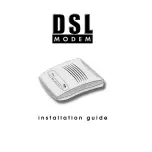
WSN Manual
Page 15 of 34
Rev. G
– 4 March 2007
5.3 12VDC POWER
A nominal 12VDC (9.6
– 15.5Vdc) is supplied to the unit via a 2 way pluggable terminal block,
the polarity is marked on the front panel and the plug has a polarity key to prevent accidental
polarity reversal. In the event of a polarity diodes and fuses protect reversal the circuit board.
5.4 ANTENNA PORT
The antenna connection is a 50-ohm BNC connector. This should be connected to a suitable
antenna or terminated in a 50-ohm load whenever the transmitter is activated. Transmission
into an open circuit may cause excessive current to be drawn from the supply and damage
could occur.
5.5 CHANNEL SWITCHES
The WSN can be user programmed with up to 80 sequential or 32 discrete simplex or semi-
duplex channels.
The two front panel BCD switches select the required channels or, if both are set to zero,
program mode is entered. In program mode, the radio interprets any signals on the serial
interface as programming commands rather than data for transmission.
When viewing a WSN with the aerial connector at the top, the left hand rotary switch is the
"tens" switch and the right is the "units" switch, thus to set channel 37, set the left switch to 3
and the right to 7.
5.6 PROGRAMMING
The parameters of the WSN can be programmed via the serial port using either DOS or
Windows based software. The individual configuration files can be stored on disc for future use
or printed. Full details of all the programmable parameters are covered in the separate
programming manual.
The RS232 Only (Full Handshaking) version can be connected directly to the serial port on a
PC using a straight-through cable.
The 5V TTL version needs an adaptor unit between the WSN and the programming computer to
convert between RS232 and TTL voltage levels.
The RS232/RS422/RS485 version does not need an adaptor because the serial port switches
to RS232 mode automatically when the radio is put into program mode by setting both front
panel switches to zero. A standard straight-through cable with all pins connected may be used
for connection to the PC
.
5.7 RF POWER
The transmit power can be accurately set using a locally connected PC running the supplied
configuration software. This allows the RF power level to be programmed directly in Watts or
milliwatts with an accuracy of +/-1dB. There are no internal power adjustment points inside the
modem.
There are two transmit power ranges available. The low power WSN169, WSN450 & WSN869
versions can be set between 10mW and 750mW, while the higher power WSN170, WSN225 &
WSN470 versions can be set between 50mW and 5W.
5.8 TIME-OUT-TIMER
The transmitter within the WSN has a time-out timer, which allows the maximum continuous
transmission time to be set in order to prevent channel blocking due to a host fault. The timer
works in all modes (external/internal modem) and is programmable in one-second steps
between 0 and 255 seconds. If not required the timer can be programmed off.
If the timer is enabled and the selected time is exceeded, transmission will cease until the action
that normally causes transmission is removed and then re-applied. More explicitly, with
RTC/CTS handshake enabled RTS must be dropped and then raised again, or if handshake is
not enabled character transmission must be suspended for at least two character periods at the
serial port baud rate. In all modes the modem’s SYS led is flashed at least twice when time-out
occurs, the flashing continues while lockout is in force. The lockout timer is disabled if the
lockout time is set to 0. The lockout timer can be operated in “resettable” or “cumulative” mode,
















































